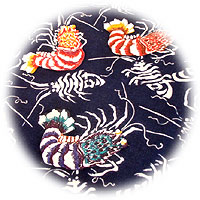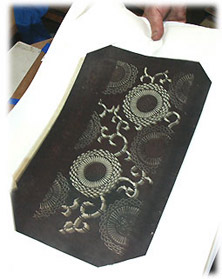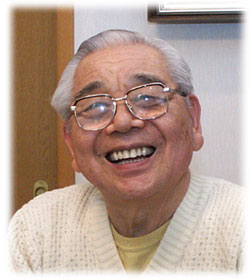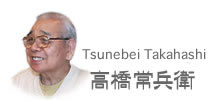|
| Yukata seems to have been in use from Heian period (794 -1185). It spread among people in the year Kansei (1789) of the Edo period (1603-1868) and flourished in the year Koka (1844) of the Edo period.  The material for Yukata was woven in
Moka city (Tochigi Prefecture) and the paper patterns were created in Shiyako and Shiraya
(Mie Prefecture). The material for Yukata was woven in
Moka city (Tochigi Prefecture) and the paper patterns were created in Shiyako and Shiraya
(Mie Prefecture).They were even made in the Nihonbashi area as well. With dyeing techniques being developed in the Edo period, there appeared beautifully designed Yukata with patterns of white and indigo in color. In the Meiji era, the pattern became more diversified into casual dress and gained much popularity among people. Presently, you can see people in Yukata on festival days and at fairs here and there on summer evenings. |
 Please tell us about your business career. Please tell us about your business career.Born into a dyeing-business family in Utsunomiya City (Tochigi Prefecture), I used to help in my father's shops at an early age. I was 18 years old when I started my training in earnest. I've been engaged in the job for nearly 60 years, except for the 3 years when I was doing my military service. Please tell us about your task. Currently, we dye Yukatas, reproducing the original dyeing patterns that have been handed down since the early Meiji era,While seriously training myself in the dyeing business, I happened to meet with a beautiful paper patterns that have been handed down from the Edo period and was greatly touched by its elegance.  Now we keep as many as 30,000 paper patterns but among them there are many that were made in the early Meiji period. After making strenuous efforts on getting down the dyeing technique, I have come to have a self-confidence in my work only from 7 years ago. What are the merits of your job? I think I can take pride in my job as I gaze upon the excellently dyed works that I've been involved in. I feel happy when my task turns out well, and can see young people in Yukatas. As an artisan, I am quite satisfied with my job now and have faith in it.  Please tell us about your future plans. I believe that traditional culture, like making Yukata and paper patterns, should be passed down to the next generation. Visiting used clothes stores, I sometimes come across a remnant of cloth dyed in an Edo period pattern. When I look at one, I am very much inspired to make such a pattern and leave it to the next generation. It is my hope that I am able to make something which will be admired by future generation. |
![]Λί](t_1yukata.jpg)
